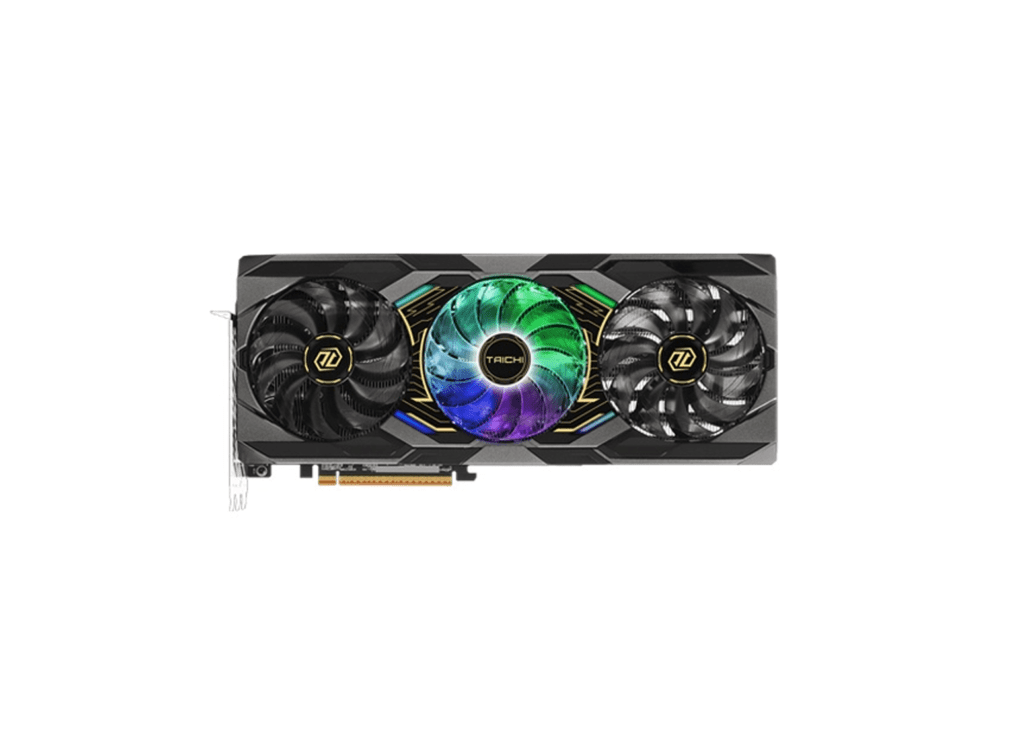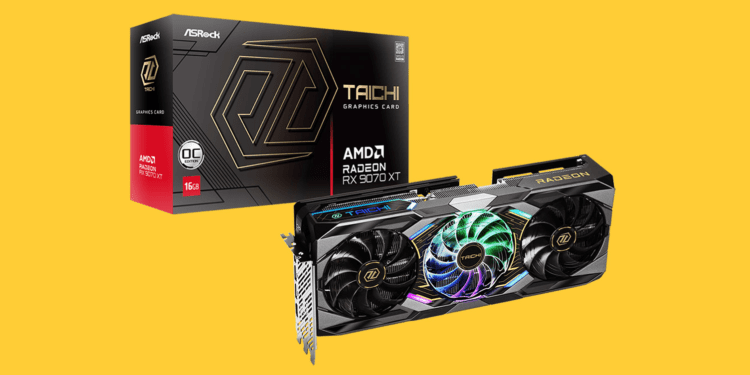Hook: “AMD’s Radeon RX 9070 XT Shocks the GPU World – Mid-Range Price, Flagship Power!”
The GPU wars are heating up again, and AMD just dropped a game-changer with the Radeon RX 9070 XT ASRock Taichi 16GB OC. If you’ve been waiting for a mid-range graphics card that delivers high-end performance without obliterating your wallet, this might be the one. But does it truly live up to the hype? Let’s break it down.

Next-Gen Power at a Mid-Range Price
The Radeon RX 9070 XT is making waves for delivering one of the biggest generational performance boosts in years. Compared to last year’s flagship, the 7900 XTX, this card doesn’t just hold its own—it actually outperforms it in certain areas. Ray tracing? Check. Raster performance? At par or better. Upscaling? AMD has pushed the envelope with FSR 4, making games look sharper while maintaining high frame rates.
Even better, AMD promises to keep these GPUs stocked at MSRP—something that’s been a rarity in the GPU market for years. If that holds true, Nvidia might finally have some real competition in the mid-range segment.
Specs and What They Mean for You
The RX 9070 XT and its sibling, the 9070, are built on the same die, but the 9070 is a slightly nerfed version with fewer functional cores and a lower clock speed. What’s impressive is that AMD didn’t cut corners on VRAM—both cards come with a generous 16GB of GDDR6 memory. Sure, it’s not the faster GDDR7 found in Nvidia’s latest cards, but GDDR6 is more affordable and widely available, helping to keep costs down while still delivering excellent performance.
One point of contention is the power delivery. The ASRock Taichi model uses the somewhat controversial 12VHPWR connector. However, with a Total Graphics Power (TGP) of 304W—about half that of Nvidia’s RTX 5090—melting cables shouldn’t be a concern. If you’re wary, there are other 9070 XT models that use the more traditional (and arguably safer) 8-pin PCIe power connectors.
FSR 4: AMD’s AI-Powered Upscaling Game-Changer
One of the standout features of the RX 9070 XT is AMD’s latest upscaling tech—FSR 4. Unlike its predecessors, this AI-powered solution is exclusive to the new RX 9000 series due to its reliance on specific AI accelerators built into the hardware. The good news? If a game supports FSR 3.1, it can easily switch to FSR 4, giving you better visuals and performance with the flip of a setting.
Beyond gaming, AMD has also improved its media engine, promising better image quality for streaming and recording. However, the lack of 10-bit 4:2:2 encoding gives Nvidia and Intel an edge for professional content creators.
Gaming Performance: How Does It Stack Up?
Since AMD markets the RX 9070 XT as a 1440p powerhouse with strong 4K capabilities, let’s see how it actually performs in real-world gaming.
Alan Wake 2
Ray tracing has always been a weak spot for AMD, but that changes here. The 7900 XTX struggled to deliver even 30 FPS at 1440p with ray tracing enabled. The 9070 XT? A whopping 2.5x performance boost over its predecessor. Without AI upscaling, it runs RT ‘Medium’ at 1440p nearly 60% faster than the RTX 3080. With FSR enabled, it hits 60 FPS at 1440p and a respectable 40 FPS at 4K.
Cyberpunk 2077
Long the bane of Radeon GPUs, Cyberpunk 2077 with path tracing is actually playable on the 9070 XT. At 1440p, with path tracing enabled and upscaling set to ‘Quality,’ the card delivers nearly 60 FPS, beating the 7900 XTX by 25% and the RTX 3080 by 46%. Once FSR 4 support is added, expect even better performance without sacrificing visual fidelity.
Final Verdict: Should You Buy the RX 9070 XT?
The Radeon RX 9070 XT ASRock Taichi 16GB OC is a mid-range monster that punches well above its weight class. It outperforms last year’s AMD flagship in ray tracing, keeps pace in rasterization, and introduces the most advanced FSR upscaling tech yet. If AMD holds to its promise of stable pricing and availability, Nvidia could have serious trouble justifying its mid-range offerings.
However, it’s not without flaws. The use of GDDR6 instead of GDDR7 means Nvidia might still have an edge in memory bandwidth, and the lack of advanced media encoding could be a dealbreaker for content creators.
Still, for gamers looking for the best price-to-performance ratio at 1440p—and even a solid entry point into 4K—the RX 9070 XT is an absolute steal.










